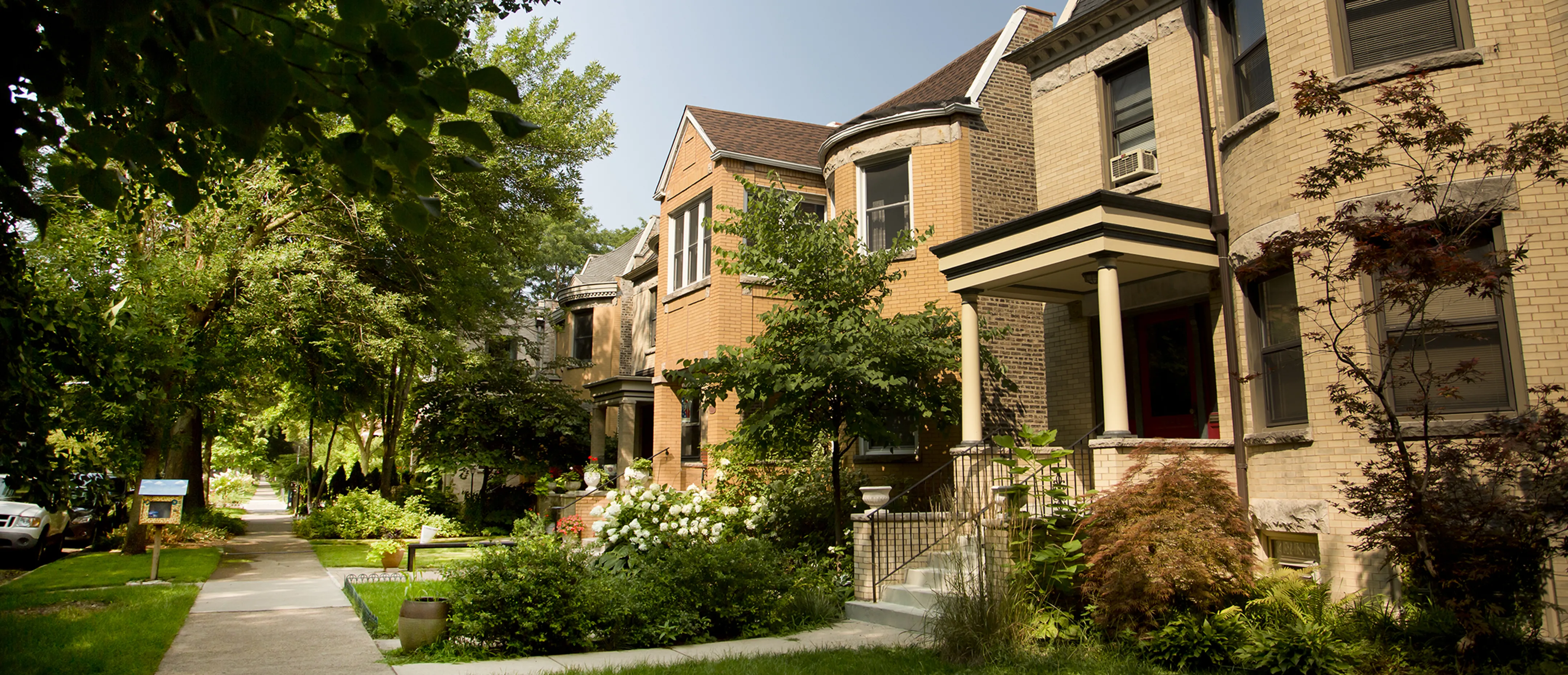History in Beverly
Vintage Restaurants
Original Rainbow Cone
Joseph Sapp was an orphan from Ohio who worked as a Buick mechanic and dreamed of opening an ice cream shop. He made that dream a reality in 1926 when he opened the “Original Rainbow Cone Lodge” with his wife, Katherine. His vision was to liberate ice cream lovers from the standard options of chocolate and vanilla. He succeeded. Early Chicagoans (many returning from remote cemeteries) flocked to his diminutive shanty on the far south side to enjoy the still-famous “rainbow cone,” which combines chocolate, strawberry, Palmer House, pistachio, and orange sherbet in the form of a multicolored rainbow. Within a few years after rainbow cone first opened at 9233 South Western Avenue, the Sapps built a sturdier and more dignified store about 30 yards to the north. They added a second floor residence in the 1950's, and the rainbow cone can still be purchased at their distinctive pink stucco edifice at 92nd and Western Avenue today. The business ultimately passed to their son, Robert, a veteran of the Second World War died in 2009, although Robert sold the business to his daughter, Lynn Sapp, in the 1980's. The rainbow cone has been a consistent staple at “Taste Of Chicago,” and Chicagoans still make the shop a summertime destination for all manner of ice cream, shakes, and other goodies.
History in Beverly
National Landmarks
American system-built homes: Guy C. Smith House
These two homes were part of a collection designed by Frank Lloyd Wright between 1912 and 1916. Wright wanted the homes to be beautiful and affordable. They are two-story, single-family units. The city designated the two homes as landmarks on July 13, 1994.
American system-built homes: H. Howard Hyde House
These two homes were part of a collection designed by Frank Lloyd Wright between 1912 and 1916. Wright wanted the homes to be beautiful and affordable. They are two-story, single-family units. The city designated the two homes as landmarks on July 13, 1994.
Longwood Drive District
This historic district in beverly on the south side was designated as a landmark on november 13, 1981. Homes of different architectural style, including carpenter gothic, queen anne, shingle, prairie school, and italianate, were built here beginning in 1873.
William and Jessie M. Adams House
Designed by Frank Lloyd Wright, this Prairie school style house was built in 1901. It was designated a chicago landmark on June 16, 1994.
History in Beverly
Notorious
Arrest of Tri-Color Stables Car Bomber
On June 14, 1965, George Jayne, owner of Tri-Color Stables in Palatine, asked Cheryl Lynn Rude, one of his world champion riders, to move his Cadillac so some of the farmhands could finish painting a barn. Rude started the ignition, and a bomb detonated underneath the hood. She was killed at the age of 22, and for more than three decades her murder remained unsolved.
Police assumed that the car bomb was intended for George Jayne, not for Cheryl Lynn Rude. George Jayne’s brother Silas, a horse trader with a notoriously shadowy and violent past, apparently sought to kill George as part of a family feud. In fact, he ultimately succeeded. In 1970, five years after the car bombing, George Jayne was slain by a bullet as he was playing cards in the basement of his home. His brother Silas was convicted of conspiring in the murder, served seven years, and was paroled in 1979, although he continued to battle other criminal charges after he was released from the clink. He died of leukemia in 1987 at age 80.
Police long suspected James Blottiaux as the car bomber and would call him in for questioning every couple of years, but release him for insufficient evidence. Ultimately, more than 30 years after the murder, the police met with Thomas Hanna, a former used car dealer and childhood friend of Blottiaux’s. Hanna told police that Blottiaux came by his dealership on the day of the murder and took a 1960 Buick LeSabre for what he thought would be a test drive. When Blottiaux returned, Hanna claimed that he was reportedly as “white as a ghost” and kept repeating that he had “killed the wrong person.” When Hanna asked what he was talking about, Blottiaux vomited.
After the bombing, one of George Jayne’s daughters told detectives that she had seen two men drive onto the grounds in a white 1960 Buick LeSabre. A car matching that description was later traced to Hanna’s used-car dealership, and about a month later the authorities showed up to question Hanna, who denied any knowledge and thus deliberately misled investigators to protect his friend. At some point in 1994, however, the police were re-examining the case and Hanna finally spilled his guts.
James Blottiaux was ultimately arrested on Monday, December 15, 1997, at a gas station at this location.
Prosecutors later alleged that Blottiaux was a stable hand at Silas Jayne’s “Idle Hour” stable and was offered $10,000 for bumping off Silas’ brother and rival, George. Blottiaux apparently contacted an acquaintance for advice on how to make a bomb and thereafter practiced detonating explosives until he felt he was ready to make the hit. At trial, that acquaintance, Haldane Clemmensen, testified that he instructed Blottiaux on how to manufacture the bomb and even helped him purchase the necessary ingredients.
In July 1999, Blottiaux was convicted of the murder of Cheryl Lynn Rude and sentenced to 100 to 300 years in prison.

